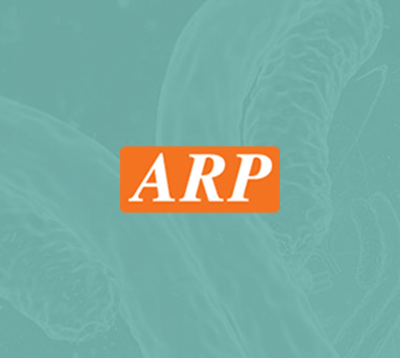| Product Name | Kv3.1 Antibody: ATTO 633 |
|---|---|
| Description | Potassium voltage-gated channel, Shaw-related subfamily, member 1, also known as KCNC1 or Kv3.1, is a human gene. The Shaker gene family of Drosophila encodes components of voltage-gated potassium channels and is comprised of four subfamilies. Based on sequence similarity, this gene is similar to one of these subfamilies, namely the Shaw subfamily (1). The protein encoded by this gene belongs to the delayed rectifier class of channel proteins and is an integral membrane protein that mediates the voltage-dependent potassium ion permeability of excitable membranes. Kv3.1b has been extensively tested in the auditory regions of mammals, and the decline of Kv3.1b expression appears to correlate with the functional decline in the medial olivocochlear efferent system (2). Other research shows potential for Kv3.1b channels to be oxygen sensors (3). . Mouse Anti-Rat Kv3.1 Monoclonal IgG1 |
| Synonyms | Krc2 1 Antibody, NGK2 Antibody, KCNC1 Antibody, voltage gated potassium channel subunit Kv3.1 Antibody, Kv4 Antibody |
| Host | Mouse |
| Clone | S16B-8 |
| Immunogen | Fusion protein amino acids 437-585 (C-terminus) or rat Kv3.1b |
| Isotype | IgG1 |
| Specificity | Detects ~110kDa. Weakly reactive in human samples. |
| Reactivity | Human, Mouse, Rat |
| Applications | AM, ICC, IF, IHC, WB |
| Form | Purified, in PBS pH7.4, 50% glycerol, 0.09% sodium azide |
| Gene Id | NP_036988. 25327 |
| Uniprot | P25122 |
| Background |
Potassium voltage-gated channel, Shaw-related subfamily, member 1, also known as KCNC1 or Kv3.1, is a human gene. The Shaker gene family of Drosophila encodes components of voltage-gated potassium channels and is comprised of four subfamilies. Based on sequence similarity, this gene is similar to one of these subfamilies, namely the Shaw subfamily (1). The protein encoded by this gene belongs to the delayed rectifier class of channel proteins and is an integral membrane protein that mediates the voltage-dependent potassium ion permeability of excitable membranes. Kv3.1b has been extensively tested in the auditory regions of mammals, and the decline of Kv3.1b expression appears to correlate with the functional decline in the medial olivocochlear efferent system (2). Other research shows potential for Kv3.1b channels to be oxygen sensors (3). |
| Supplier | Stressmarq Biosciences |
All Research Products are sold for laboratory RESEARCH USE ONLY and ARE NOT TO BE USED FOR HUMAN OR ANIMAL THERAPEUTIC OR DIAGNOSTIC APPLICATIONS. The information presented is believed to be accurate; however, said information and products are offered without warranty or guarantee since the ultimate conditions of use and the variability of the materials treated are beyond our control. Nothing disclosed herein is to be construed as a recommendation to use our products in violation of any patents. ARP American Research Products, Inc. does not submit its products for regulatory review by any government body or other organization, and we do not validate them for clinical, therapeutic or diagnostic use, or for safety and effectiveness. You are solely responsible for making sure that the way you use the products complies with applicable laws, regulations and governmental policies and for obtaining all necessary approvals, intellectual property rights, licenses and permissions that you may need related to your use. Under no circumstances shall ARP American Research Products, Inc. be liable for damages, whether consequential, compensatory, incidental or special, strict liability or negligence, breach of warranty or any other theory arising out of the use of the products available from ARP American Research Products, Inc. Nothing contained herein warrants that the use of the products will not infringe on the claims of any patents covering the product itself or the use thereof in combination with other products or in the operation of any process. ARP American Research Products, Inc. disclaims any and all representations or warranties of any kind whatsoever, express or implied, including without limitation any implied warranties of merchantability or fitness for a particular purpose, of non-infringement, or regarding results obtained through the use of any product, whether arising from a statute or otherwise in law or from a course of performance, dealing or usage of trade.



